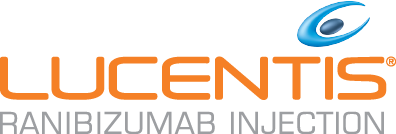With the Genentech Ophthalmology Co-pay Program, eligible patients with commercial insurance could pay as little as $0 per LUCENTIS co-pay. Eligible patients could also pay as little as $0 per injection co-pay for LUCENTIS.
Help with costs for LUCENTIS
Help with costs for injections
The Product and Administration Co-pay Programs (“Programs”) are valid ONLY for patients with commercial (private or non-governmental) insurance who have a valid prescription for a Food and Drug Administration (FDA)-approved indication of a Genentech medicine. The Programs are not available to patients whose prescriptions are reimbursed under any federal, state, or government-funded insurance programs (included but not limited to Medicare, Medicare Advantage, Medigap, Medicaid, TRICARE, Department of Defense, or Veterans Affairs Programs) or where prohibited by law or by the patient’s health insurance provider. If at any time a patient begins receiving prescription drug coverage under any such federal, state or government-funded healthcare programs, the patient will no longer be eligible for the Programs.
Under the Programs, the patient may be required to pay a co-pay for drug costs and a co-pay for administration costs. The final amount owed by a patient may be as little as $0 for the Genentech medicine or administration of the Genentech medicine (see Program specific details available at the Program website). The total patient out-of-pocket cost is dependent on the patient’s health insurance plan. The Programs assist with the cost of the Genentech medicine and the administration of the Genentech medicine only. It does not assist with the cost of other administrations, medicines, procedures or office visit fees. After reaching the maximum Programs’ benefit amounts, the patient will be responsible for all remaining out-of-pocket expenses. The amount of the Programs’ benefits cannot exceed the patient’s out-of-pocket expenses for the cost of the Genentech medicine or administration fees for the Genentech medicine.
All participants are responsible for reporting the receipt of all Programs’ benefits as required by any insurer or by law. The Programs are only valid in the United States and U.S. Territories and are void where prohibited by law. The Drug Co-pay Program shall follow state restrictions in relation to AB-rated generic equivalents (e.g., MA, CA) where applicable. The Administration Co-pay Program is not valid for patients who reside or receive treatment in a restricted state (e.g. Massachusetts or Rhode Island). No party may seek reimbursement for all or any part of the benefit received through the Programs. The value of the Programs is intended exclusively for the benefit of the patient. The funds made available through the Programs may only be used to reduce the out-of-pocket costs for the patient enrolled in the Programs. The Programs are not intended for the benefit of third parties, including without limitation third party payers, pharmacy benefit managers, or their agents. If Genentech determines that a third party has implemented programs that adjust patient cost-sharing obligations based on the availability of support under the Programs and/or excludes the assistance provided under the Programs from counting towards the patient’s deductible or out-of-pocket cost limitations, Genentech may impose a per fill cap on the cost-sharing assistance available under the Programs. Submission of true and accurate information is a requirement for eligibility and Genentech reserves the right to disqualify patients who do not comply with Genentech Program Terms and Conditions. Genentech reserves the right to rescind, revoke or amend the Programs without notice at any time.
Additional terms and conditions apply. Please visit the co-pay Program website for the full list of Terms and Conditions.
-
We are open from 6AM-5PM PST, Mon. through Fri., except for the following holidays:
- New Year's Day
- Memorial Day
- Independence Day
- Labor Day
- Thanksgiving Holiday (Thursday and Friday)
- Christmas Day
-
-
LUCENTIS [package insert]. South San Francisco, CA: Genentech, Inc; 2024.
LUCENTIS [package insert]. South San Francisco, CA: Genentech, Inc; 2024.
-
Data on file. South San Francisco, CA: Genentech, Inc.
Data on file. South San Francisco, CA: Genentech, Inc.
-
-

